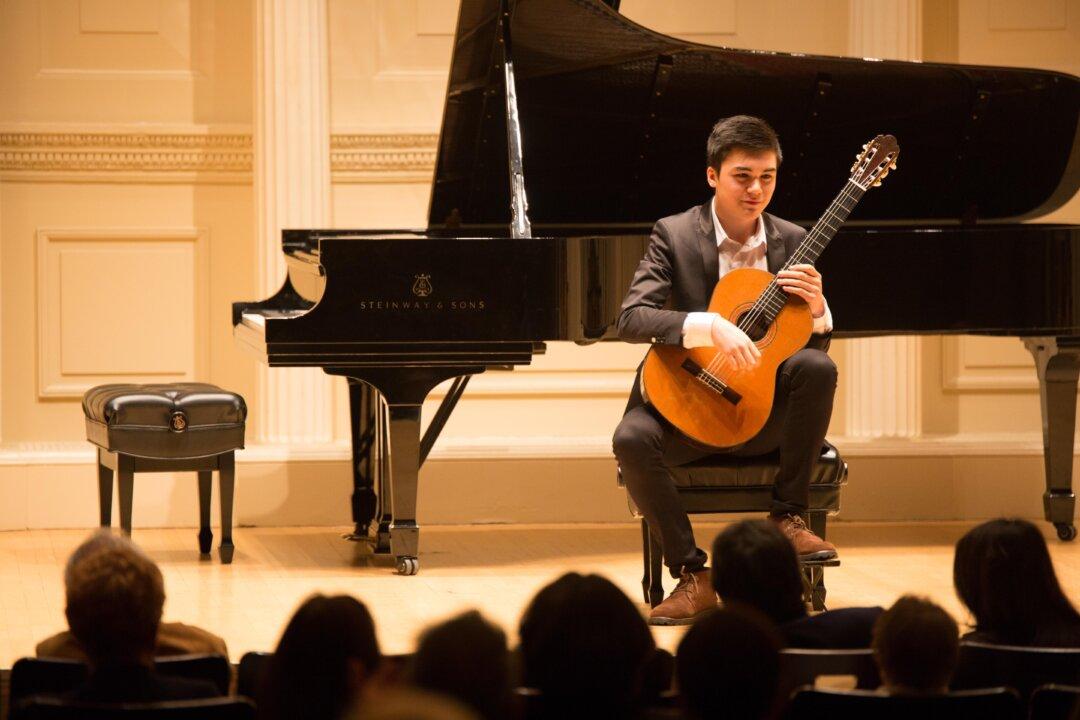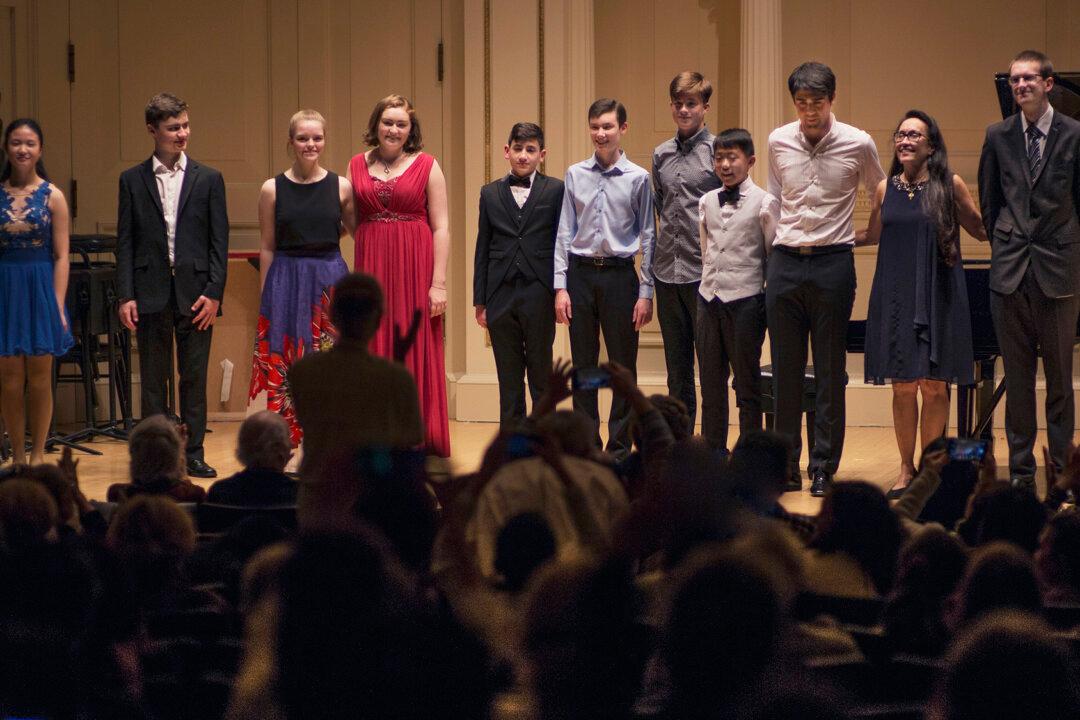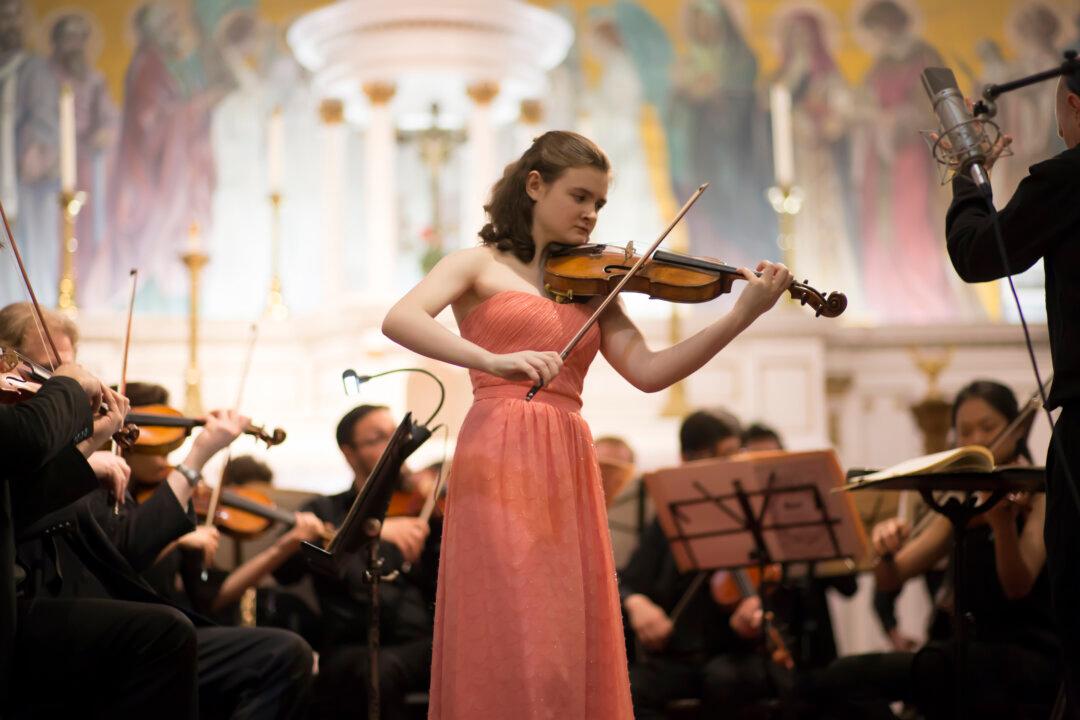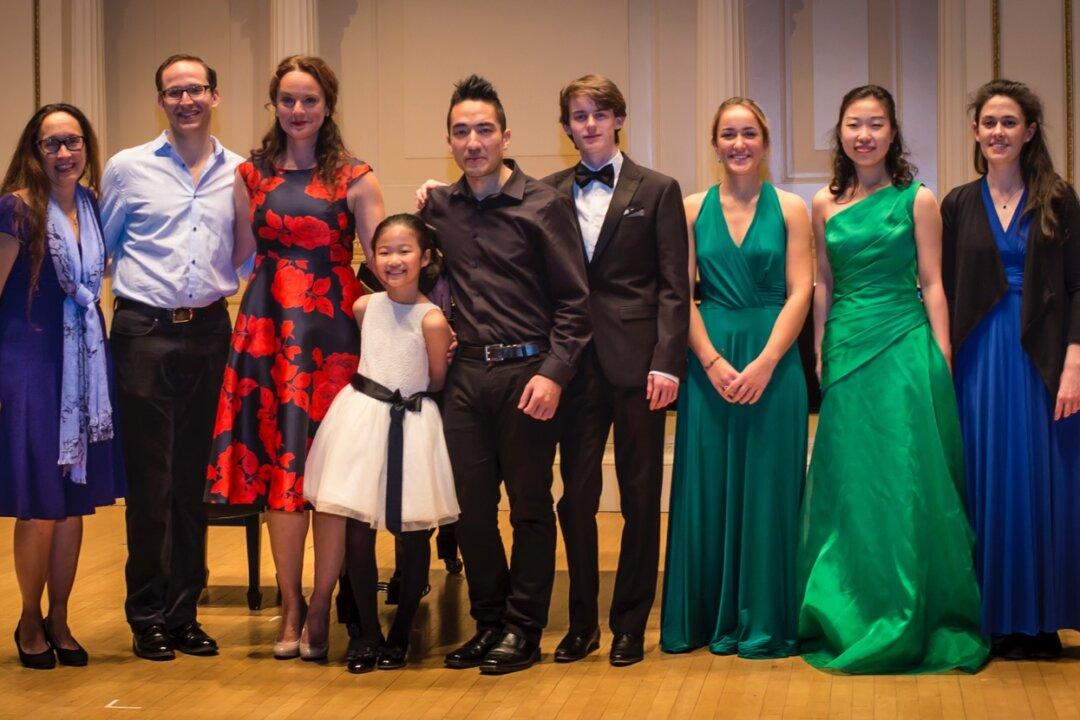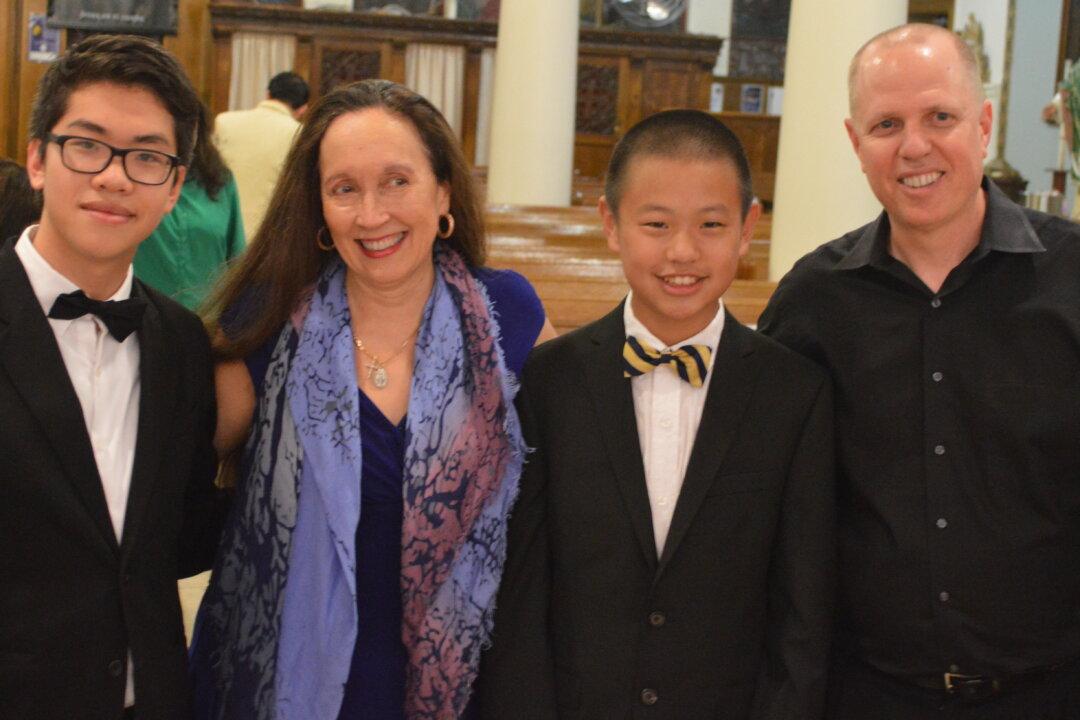NEW YORK—The New York Concerti Sinfonietta presented an ambitious Irish Festival Oct. 7 through 13. The Sinfonietta offered four different programs in four venues in just seven days, a feat of logistics similar to offering the four operas of Wagner’s “Ring” cycle in a single week.
In addition to the First-Prize winners’ of the 2015 International Shining Stars Competition concert at Carnegie Hall’s Weill Recital Hall (Oct. 11), performances were held in an East Side mansion (Oct. 7) and two historic West Side churches: Our Lady of Pompeii (Oct. 9) and St. Gregory the Great (Oct. 13).
The Festival distinguished itself by presenting newly discovered competition winners of impressive attainment.

